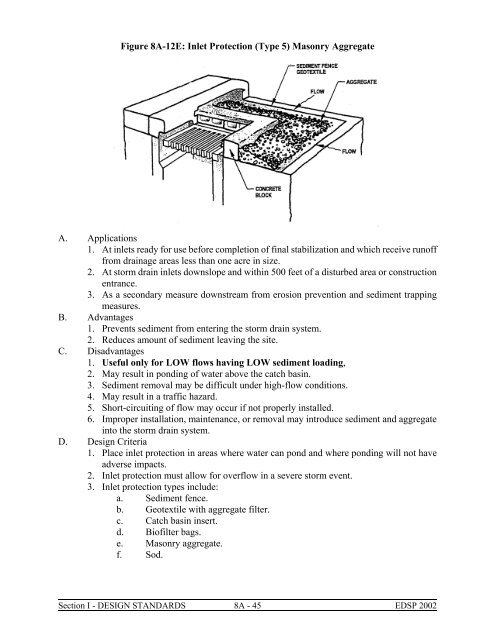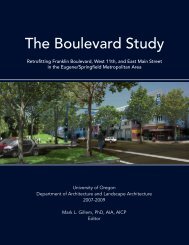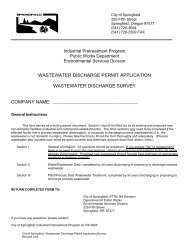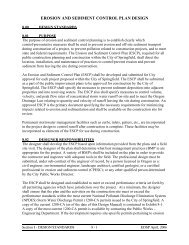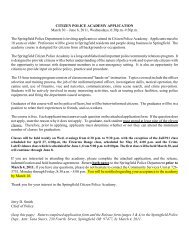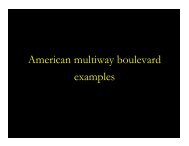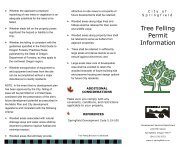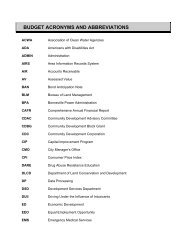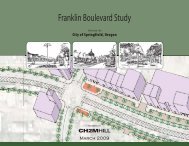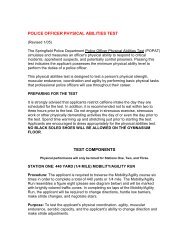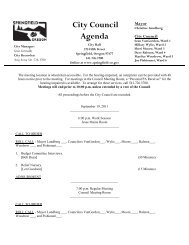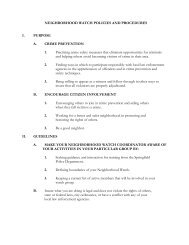Figure 8A-12D: Inlet Protection (Type 4)
Figure 8A-12D: Inlet Protection (Type 4)
Figure 8A-12D: Inlet Protection (Type 4)
You also want an ePaper? Increase the reach of your titles
YUMPU automatically turns print PDFs into web optimized ePapers that Google loves.
<strong>Figure</strong> <strong>8A</strong>-12E: <strong>Inlet</strong> <strong>Protection</strong> (<strong>Type</strong> 5) Masonry AggregateA. Applications1. At inlets ready for use before completion of final stabilization and which receive runofffrom drainage areas less than one acre in size.2. At storm drain inlets downslope and within 500 feet of a disturbed area or constructionentrance.3. As a secondary measure downstream from erosion prevention and sediment trappingmeasures.B. Advantages1. Prevents sediment from entering the storm drain system.2. Reduces amount of sediment leaving the site.C. Disadvantages1. Useful only for LOW flows having LOW sediment loading,2. May result in ponding of water above the catch basin.3. Sediment removal may be difficult under high-flow conditions.4. May result in a traffic hazard.5. Short-circuiting of flow may occur if not properly installed.6. Improper installation, maintenance, or removal may introduce sediment and aggregateinto the storm drain system.D. Design Criteria1. Place inlet protection in areas where water can pond and where ponding will not haveadverse impacts.2. <strong>Inlet</strong> protection must allow for overflow in a severe storm event.3. <strong>Inlet</strong> protection types include:a. Sediment fence.b. Geotextile with aggregate filter.c. Catch basin insert.d. Biofilter bags.e. Masonry aggregate.f. Sod.Section I - DESIGN STANDARDS <strong>8A</strong> - 45 EDSP 2002


